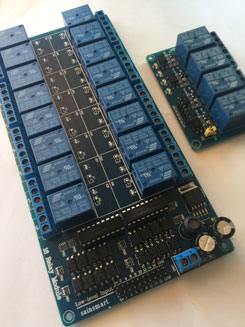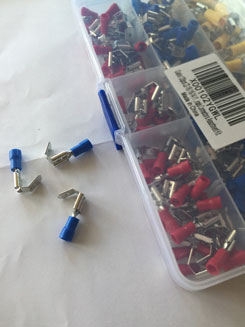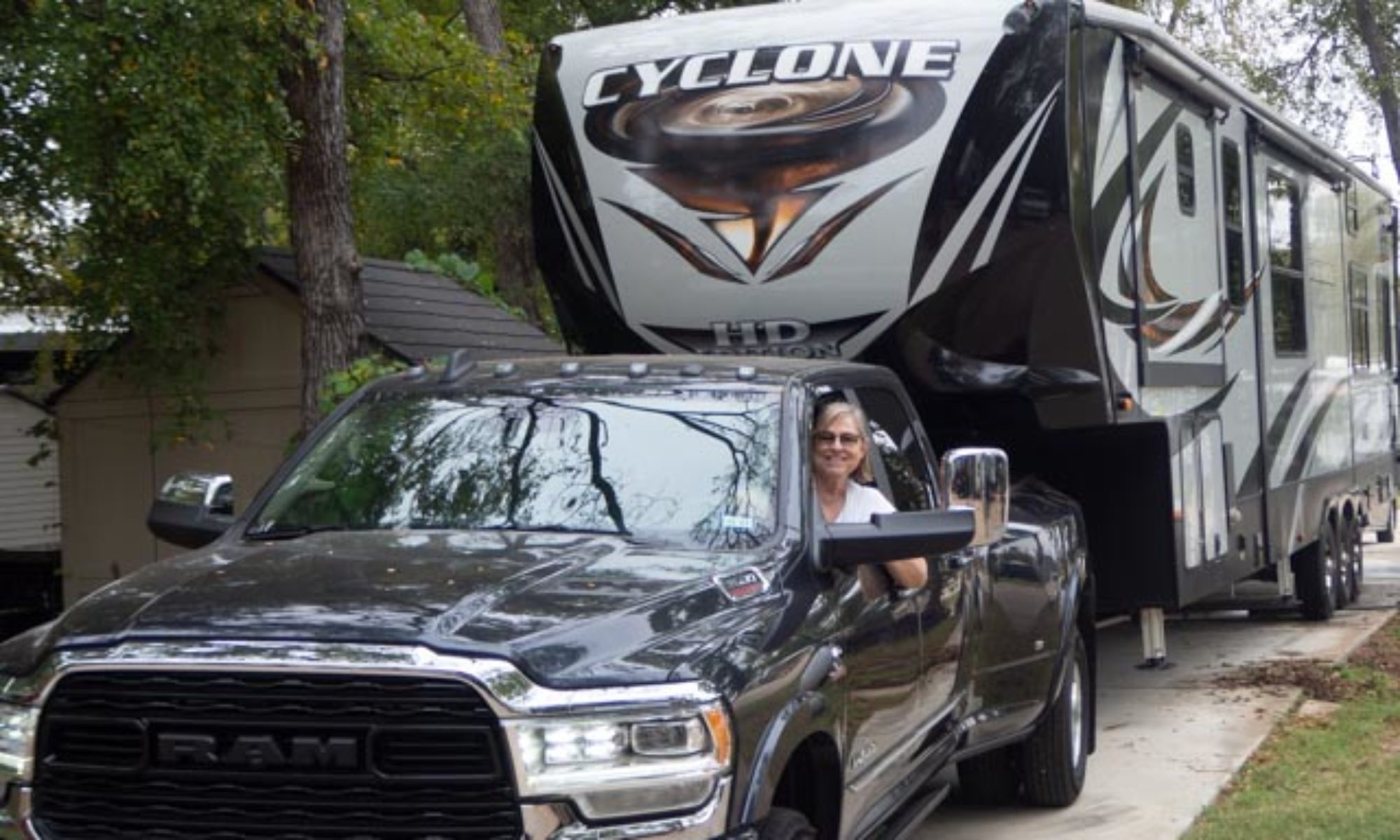One of the lessons I learned from automating the lighting of my last RV is that I need to have a plan for what to do when it comes time to sell it. I didn’t have a plan, because I thought we were going to live in it until I died. Then it would be someone else’s problem. But now I know that I might have to replace the RV every ten years or so, so I’m going to be a bit smarter about it this time.
For the lighting for this RV, I am going to install my gadgets in a manner that doesn’t interfere with the operation of the existing switches. That way I can choose to simply disable the IoT automation, and everything will continue to work as it did the day I bought the RV. Also, I want to make it easy to remove the automation controllers without having the splice or repair any wiring going to the switches or lights.

To allow the switches to continue to work without automation, I’m going use relays connected in parallel with the switches. When using automation, the switches will be left off and the automated relays will open and close the circuit. When the relays are off or have been removed, the switches will continue to work as before. Since most of the lights are located in one of two control panels, that means I can probably handle most the lights with a pair of Photon controllers, each with a Sainsmart 16 relay board.

To allow connection without modifying the wiring, I’m going to use piggyback blade connectors.
And of course, the Photon will be running the Patriot library to allow both iOS and Alexa voice control. Time to warm up the soldering iron.
Author update:
Upon connecting the Sainsmart 16-relay board to the Photon output pins (5v tolerant) I discovered that the relays are always energized. The 3.3v HIGH signal is insufficient to turn off the relay. I could add level converters, MOSFETs, etc. to get this to work, but I don’t want all that extra circuitry flopping around when the RV is bouncing down the road. So I’m going to take a different tack.
Control Everything
In looking for Photon (3.3v) compatible relay boards, I came across some relay boards made by ControlEverything.com. These contain various numbers of mechanical or solid state relays. They have a built-in regulator to allow 12v input to the board. And best of all the the Photon plugs directly onto the board. This will eliminate a bunch of wiring.
Even better, multiple boards can be daisy chained via I2C. So for example, I can start with an 8 relay board, then add an additional 8 relay I2C board without the need for another Photon. Surprisingly, the two 8 relay boards (with and without Photon) are a bit cheaper than a 16 relay board.
I’ve received the boards, and am starting to experiment with them. Things look very good so far, but I’ll need to modify the Patriot plugins to handle talking with the relays via I2C instead of direct pin mappings. I’ll be blogging about that in the next post.
P.S. Sainsmart has be great to work with, and I would definitely work with them in the future. This combination of parts just didn’t work out for this project. And no, they didn’t pay me to say that 🙂
